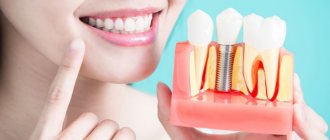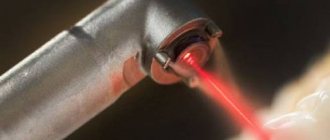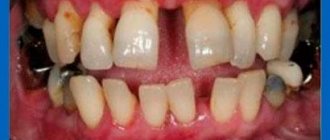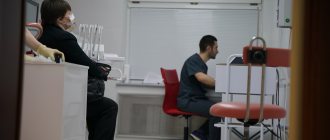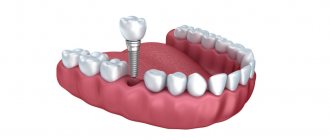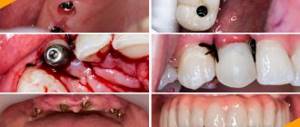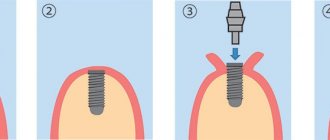3d implantation
– an innovative method of restoring lost teeth, based on computer modeling of the alveolar process of the upper and lower jaw and the production of a surgical template that allows for the most accurate puncture of the gums with subsequent implantation of a prepared dental implant.
3-D technology has been successfully used in various implantation protocols, but most often this method is used in one-stage implantation with immediate loading.
In this article we will look at the features of 3D dental implantation
according to the template, stages of the procedure, advantages and disadvantages, in which dental centers in Moscow this method of dental implantation is practiced.
Planning for dental implantation in dentistry
Computer 3D planning of dental implantation when installing implants is a revolutionary breakthrough in dentistry.
The need for the use of such technology is obvious, since it has been proven that the effectiveness of dental implants and the reliability of their installation depend on the quality of the patient’s examination and the correct planning of further measures. Indeed, during the scan, the specialist receives the necessary information about the anatomical structure of the jaw, the distance to the maxillary sinus, the mandibular canal and other important structures. The use of high-tech equipment allows you to install the implant as accurately as possible, eliminating the risk of its incorrect positioning, as well as the development of complications.
Advantages and disadvantages of 3D dental implantation
The modern 3D implantation technique has many advantages.
Main advantages:
- elimination of medical errors during implantation;
- a low-traumatic operation that does not require incisions in the gums and subsequent suturing;
- maximum accuracy of implant installation;
- reduction of procedure time;
- rapid wound healing without the risk of infection, severe swelling and pain;
- the ability to install an implant and a tooth crown in one procedure;
- comfort for the patient and the doctor;
- minimum recovery time after the procedure;
- There are virtually no risks of rejection of an implant implanted using a surgical template.
The disadvantages of 3D implantation using a template are relatively long preparation and higher cost of the procedure.
Planning by CT
Computed tomography of the jaw is performed using a scanning device that resembles a compact video camera. The study consists of obtaining layer-by-layer images of the object being studied. By processing the finished images using a special program, it is possible to obtain a 3D image of the teeth.
Planning dental implantation using a CT scan of the jaw is characterized by the following advantages:
1. Obtaining comprehensive information about the entire dental system;
2. Visualization of images on the monitor in three-dimensional format;
3. Possibility of enlarging the object under study, more detailed consideration of individual parts;
4. Study of the object from different angles. In this case, the viewing angle is 360 degrees;
5. Transmission of research results over a distance.
During the scan, it is possible to obtain the necessary information about the anatomical structure of the jaw and all its structures, and to clarify the distance to the maxillary sinus and mandibular canal.
3D computer planning in orthognathic surgery
NKclinic is visited by patients not only with aesthetic smile defects, but also by people with severe consequences of extensive trauma to the maxillofacial area, facial deformities due to oncology operations. Successful orthognathic intervention to correct such serious disorders certainly requires orthodontic preparation of the patient.
The visual effect of wearing special structures and the operation itself is simulated using interactive 3-dimensional computer planning programs Nemotec and Dolphin 3D.
Each stage of teeth movement and changes in facial configurations can be tracked in detail, and the intermediate and final results can be accurately predicted. Computer processing of initial data and digital planning of orthodontic and surgical procedures based on it help to minimize risks and achieve the goal.
Close cooperation between competent orthodontists, surgeons and 3D engineers allows us to take on the most difficult cases and guarantee success!
Requirements for successful implantation and digital template for implantation surgery
An important factor that influences not only the choice of implantation technique, but also the possibility of its implementation, are the quality indicators of bone tissue, its density and ability to osseointegrate. If the results are insufficient, bone grafting is necessary, the essence of which is to increase the volume of the jaw bone and improve its properties. Initial indicators can be determined using CT, as well as osteodensitometry. A morphological examination of a bone biopsy can help in diagnosis.
Features of prosthetics on implants
The treatment consists of inserting a special titanium threaded rod into the place of the lost tooth, which replaces the root. An abutment is placed on top of the pin, onto which the crown is directly attached.
Creating an artificial tooth consists of the following steps:
- diagnosis and treatment plan;
- sanitation, including removal of sources of infection and treatment of inflamed gums;
- restoration of bone tissue to firmly secure the implant;
- installation of an artificial tooth;
- attaching temporary crowns;
- the final stage is the replacement of temporary crowns with permanent ones.
Thus, prosthetics is a low-traumatic and painless process of tooth restoration.
Important! Implantation can be performed immediately after tooth loss or extraction.
This way, the functioning of the chewing apparatus is not disrupted, and the smile remains attractive. The popularity of this type of prosthetics lies in a number of advantages:
- Long service life. An artificial tooth can last 20 years or more.
- No harm to neighboring teeth. When installing implants, there is no need to file adjacent teeth or remove pulp.
- Maintains the natural state of the oral cavity. Unlike dentures, an implant does not become loose and does not require support from adjacent teeth like dental bridges.
- Attractive view. Dental implants look and function like real teeth.
- Restoration of chewing function. The installed design makes it easier to eat food; there is no need to change the diet.
- Previous speech and diction. Dental implants do not cause any discomfort in speech.
- Safety. To make the pin, titanium is used, which does not enter into chemical reactions, does not corrode and is compatible with oral tissues.
- No pain after installation. No discomfort in the mouth after installation of implants.
- There are practically no age restrictions. Patients 16 years of age and older can have implants.
Important! Timely installation of an artificial tooth will help avoid deformation of the face shape. Since the absence of even one tooth can affect the distortion of the lip line, contribute to the appearance of wrinkles and changes in the oval of the face.
Planning stages
The main stages of implantation planning are as follows:
• diagnostics of the condition of the oral cavity, carried out by CT;
• processing of the obtained results and visualization of the model on the monitor screen;
• planning the virtual position of implants and abutments;
• creation of a digital version of a surgical template, which is designed for more accurate installation of implants into bone tissue.
The use of a surgical template made of polymer material using 3D printing allows you to install the implant as accurately as possible, eliminating the risk of its incorrect positioning, as well as the development of complications.
Turnkey dental implantation price
The full package of services from diagnosis to installation is called “turnkey implantation”. The prosthetic procedure begins with a consultation with a dentist, who must make sure that implantation is appropriate and the patient has no contraindications to the procedure. Next, an X-ray examination and computer diagnostics of the jaw are performed to determine the presence of pathologies and the quality of the bone. Under favorable conditions, implants are introduced. To implant a front tooth, it is necessary to install a temporary prosthesis.
The healing process lasts 2-6 months, after its completion an abutment is attached to the artificial root. To achieve a natural contour, a gum former is installed. The final stage is to attach the crown to the support head. The crown is created based on impressions of the patient's jaw.
The advantage of turnkey implantation is that the patient immediately receives complete information about the treatment and the cost of all services.
The price of turnkey implantation usually includes payment for:
- doctor consultations;
- necessary examination;
- selection of implants and their installation;
- visits to your doctor throughout the year.
Dental implantation is inexpensively possible with careful planning; for this, the patient should contact the clinic for a preliminary consultation.
During the rehabilitation period, you should periodically visit the dentist to monitor the condition of the implants, and also carefully care for them.
3D planning will help you improve implantation results
The most effective tool for implantation planning is 3D technology. An unsurpassed assistant in planning dental implantation is the Navigation Implantology Module for the Avantis 3D Software program.
How does the Avantis 3D Soft navigation implantology module work?
A fundamental feature of the program is its ability to compare data from computed tomography and visual scanning of the dentition. This allows you to solve a wide range of problems in implantology:
• Determine the fundamental possibility of implantation and plan the location of implants relative to each other and healthy teeth;
• Prepare guide templates for production for any type of prosthesis fixation (dental, on-bone, supragingival);
• Analyze the relative position of implants with various tissue structures (for example, the mandibular canal, gums, teeth);
• Plan the surgical approach for implantation (including designing the position of the bed in the bone, the relationship with the mandibular canal and the cortical layer of the bone);
• Plan the entire process of drilling the implantation channel, both with a pilot drill and using cutters with internal cooling;
• Plan drilling with a cutter with external cooling for any implantation system, using a unique patented technology;
• Model the dentition;
• Make temporary removable implants.
How is controlled implantation performed?
For complex implantation, atrophy of the bone tissue of the alveolar processes, and a large volume of orthopedic reconstructions, virtual three-dimensional construction of the dentition is used. The implant surgeon, based on the 3D model, performs a preliminary virtual operation and receives a visual demonstration of the future result, which is also agreed with the patient. This allows you to avoid any kind of surprises for both the doctor and the patient. This is why it is called “controlled implantation”.
Computer analysis of the initial data and mathematical calculations determine the optimal positioning of future implants, and a virtual template is designed. Using a 3D printer, the created model is “printed” on a material medium - most often a polymer structure is made that can be used by a surgeon.
If the jaw is completely toothless, a computed tomography scan of the jaws, wax modeling of future teeth and scanning of them are performed. Combining CT data with a scan of virtual teeth provides the basis for designing a stereolithographic template.
In addition, 3D modeling allows you to create future temporary orthopedic structures even before surgery. Immediately after the implantation process, the patient can use temporary crowns supported by implants, which has the most beneficial effect on psychological and aesthetic comfort and allows him to lead a full lifestyle.
Why do I need the Avantis 3D Software program?
The program allows the dentist:
• Conduct diagnostics as quickly and accurately as possible;
• Effectively plan treatment for patients requiring implantation;
• Use working time effectively;
• Increase the level of patient confidence;
• Accelerate the start of treatment;
• Reliably predict treatment results;
• Increase the flow of patients;
• Increase physician profits through more efficient use of resources.
In what cases is the digital implantation program from Avantis 3D indispensable?
Digital implantation
What this is today is well known to specialists at top and most progressive clinics, who set themselves the task of obtaining the highest quality prosthetic results. This is a process in which computer technology is involved throughout its entirety, from the moment of preparatory measures and diagnostics to the implantation of the implant and installation of the prosthesis in the oral cavity.
Digital implantation
teeth is based on high-precision diagnostic studies.
To determine the most optimal place for implantation, X-ray diagnostics will not be enough. Computer technology not only speeds up the process, but also contributes to obtaining the highest quality results. By scanning the oral cavity and processing the finished images using a special program, it is possible to obtain a 3D image of the teeth, that is, complete information about the structure of all structures of the upper and lower jaw, and clarify the distance to important anatomical formations. Such information is important for choosing further tactics. In many cases , the use of digital
diagnostics during
implantation
eliminates the need for bone grafting.
The main task of the software product during implantation is to achieve maximum quality of implant and crown installation. Compliance with this condition is important, since the method of restoring teeth is very expensive, and it is necessary for the patient to be satisfied with the results of prosthetics. The Avantis3D digital program fully guarantees this.
Implants installed using computer technology are characterized by such advantages as:
- better osseointegration;
- strong fixation in bone tissue;
- the ability to carry out an event even if it is in short supply.
How is jaw modeling performed?
After completing the diagnosis, the specialist proceeds to the next stage in installing the implant - computer modeling of the jaw.
.
The main task of this process is to create a model of the future prosthesis in digital format. The result must take into account both the patient’s initial data and his wishes, and be functionally convenient. Modeling
can be carried out for both
and lower
jaws Modeling of a canine or second molar of the upper jaw
can also be carried out separately .
The advantage of this process, which distinguishes it favorably from the classical technique without the use of computer technology, is the possibility of discussing an intermediate option with the patient. The image of the model on the monitor, as well as the ability to make any changes to the resulting version, ensure that it is possible to fully achieve full agreement on what the final result should be. The finished prosthesis will satisfy the patient’s wishes as fully as possible. Considering the high cost of implantation, this approach is very important; it will eliminate the patient’s complaints about the results of treatment.
Why choose Avantis 3D product?
In addition to unique opportunities to improve the quality of implantation, our program is a way to additionally attract patients, since they significantly improve the image of the medical institution. The availability of information in the public domain allows patients to choose the clinic for treatment where the use of modern technologies and techniques will be guaranteed, therefore digital implantation for dentists
is a source of additional income.
If specialists strive to achieve the highest results in their work, then the domestic software product Avantis 3D
- exactly what is needed. Its use so clearly represents the end result that it significantly increases the motivation of patients for the need for this treatment and has a positive effect on the economic component of the clinic’s activities.
